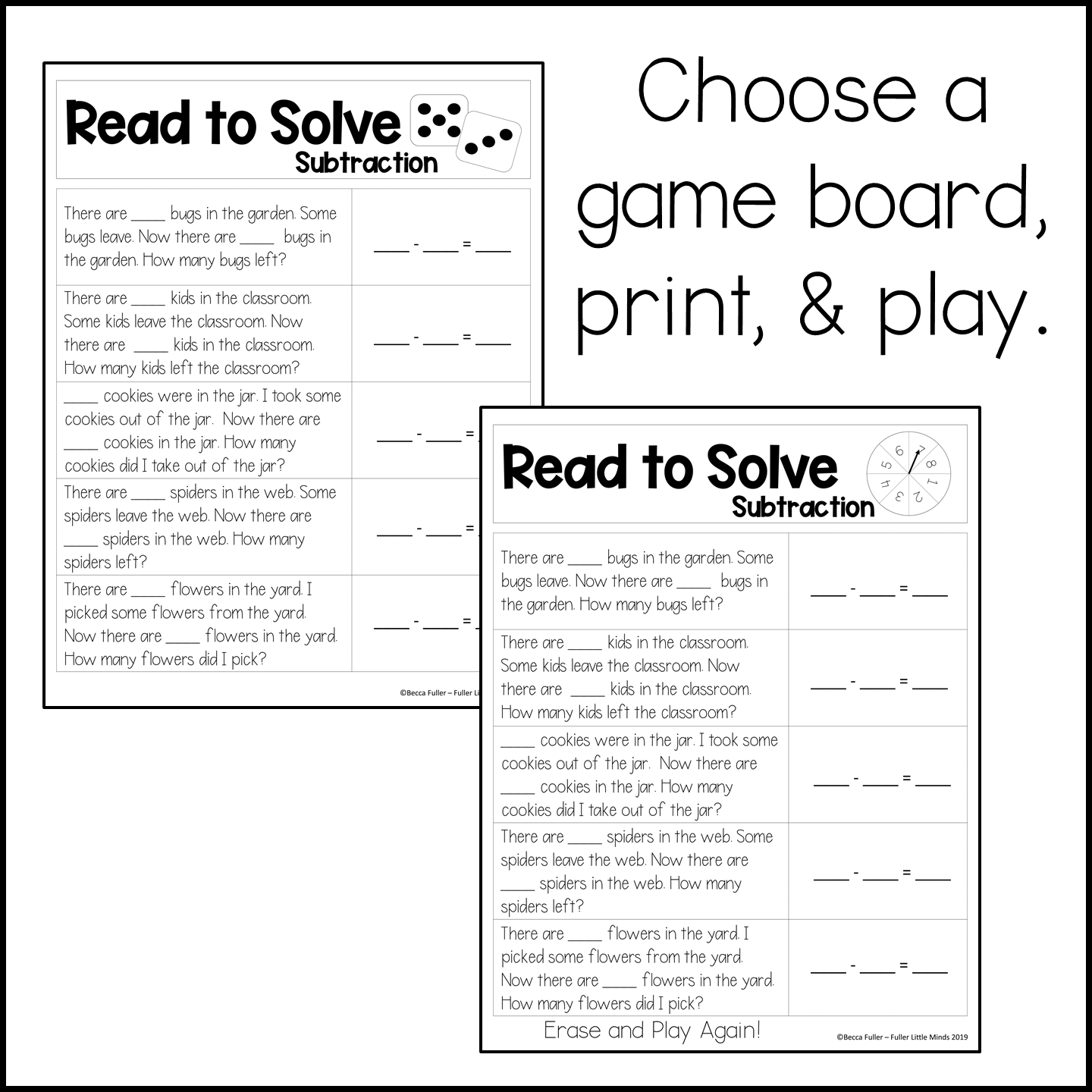5 Reasons to Use Never-Ending Math Games in Your Math Centers
WHAT ARE NEVER-ENDING MATH GAMES?
I discovered the idea of “never-ending” math games early on in my teaching career and I will never go back! Never-ending math games are games that can be played over and over without ever being the same! For example, a math game that requires students to roll the dice to create a math problem is never-ending and always changing because the student will be creating new problems each time they play the game. In contrast, a game in which there are set problems on a game board can be played over and over, but students will be working on the same problems each time they play the game. This limits the problems students are able to practice and will eventually cause boredom and disinterest in the math game.
Here’s an example. This is one of my low-rep never-ending word problem games:
Of course, there is a time and place for a math game that isn’t never-ending, but here are 5 reasons you should switch to never-ending math games for your math centers!
REASON#1: NEVER-ENDING MATH GAMES ARE USUALLY LOW PREP
If you’ve read any of my other blog posts or Instagram posts, you’ve probably figured out that I am team LOW PREP. One major reason I love using never-ending games is that they are usually low prep. There are so many games that use one sheet of paper. No need to prep a big game board, tiny pieces, game cards, etc. To prep my math games, I print the directions and tape them on the front of a folder. Then I print the game board and either laminate it, put it in a dry-erase sleeve, or put it in a page protector (a cheap version of a dry-erase sleeve!) The game boards go in the folder and then students just need to grab a dry-erase marker and dice or a spinner!
REASON #2: DIFFERENTIATION IS EASY
We all know that one of the most difficult parts of teaching is accommodating the wide range of ability levels we see in each classroom. Using never-ending games makes differentiating so much easier! Since these games do not have set problems on a game board or game cards, I don’t have to prep different versions of the games for each of my groups. Instead, I will change the dice or spinner each group is using. My below grade level group might use regular 6-sided dice while my above grade level group is using 12-sided dice. Quick and effective!
REASON #3: NO EARLY FINISHERS
When a game can be played over and over again and the game changes each time it is played, there’s no need for early-finisher activities. Students can simply keep playing! This saves even more prep time because you’re not prepping an activity for students to work on after they finish their game. It also prevents students from getting bored with the games. I have used the same 10-15 games for an entire year and students never got bored because the game changes each time and it was easy for me to make the games more challenging as the year progressed!
REASON #4: EASY ORGANIZATION
When you prep a math game that has game pieces, cards, game boards, and a million other pieces, it can be difficult (and expensive) to find the right storage solution. When you’re printing a one-page never-ending game, simply store it in a $0.50 folder and call it a day! Personally, I like to tape the directions on the front of the folder, and have several game pages inside. I keep the folder in a bin with dice and dry erase markers so everything is ready to go!
REASON #5: PLAY WITH PARTNERS OR INDEPENDENTLY
Never-ending games are really easy to adapt to both partner and independent play! My dice and spinner games come with directions for both independent and partner play for that exact reason. I love having this flexibility without prepping two games. Whether is a collaborative day or an independent day, I can use the same games.
READY TO TRY NEVER-ENDING GAMES?
If you’re ready for a low prep, easy-to-differentiate, easy-to-organize, flexible math center then try never-ending games! I promise you won’t regret it.
If you teach first grade, check out my math game bundle with 30 no-prep games!
Click here to check out individual games for each first-grade standard.











